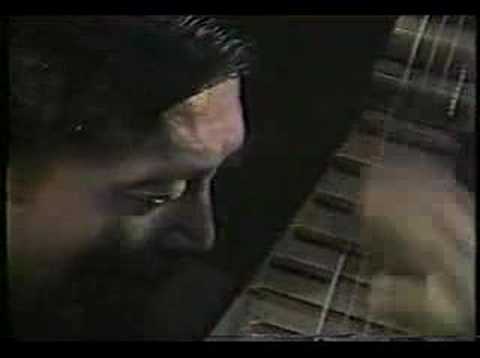12/8 – 28th Shadow, by P.K.14, from Who Who Who and Who Who Who (2004, Beijing Modern Sky). P.K.14 is one of China’s most well-known rock bands, referred to sometimes as the ‘elder statesmen’ of the Beijing rock scene. Their music is typically called post-punk indie rock style. They originally formed in Nanjing, but moved to Beijing in 2001. Read more about them and hear some of their music here: http://maybemars.org/index.php/artists/pk-14/?lang=en.
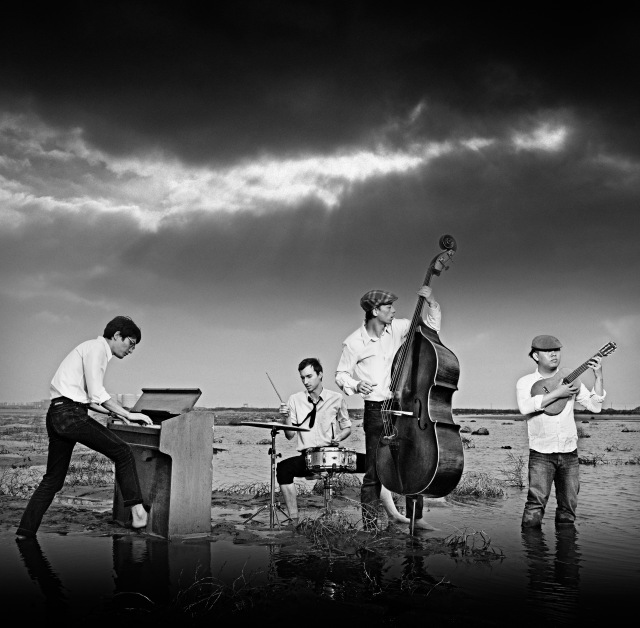
P.K.14
12/6 – Hold Your Hand by Queen Sea Big Shark (后海大鲨鱼) from their 2007 debut album, Queen Sea Big Shark. Based in Beijing, QSBS is another indie-style rock band.
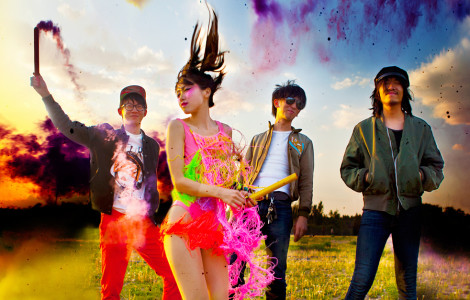
Queen Sea Big Shark
12/1 – 潮起潮落是什么都不为 (The Tide, It Knows Not Why) by Xie Tianxiao (XTX, 谢天笑). XTX is a big rock star; originally a member of the Cold Blooded Animals, the first Chinese group to play at Austin’s SXSW festival.
11/29 – My Banjo and I, by Hanggai. Hanggai is a Beijing-based Mongolian folk group consisting of ethnic Mongolian and Han musicians. Here’s a brief introduction from Wikipedia: “The term ‘Hanggai’ itself is a Mongolian word referring to an idealized natural landscape of sprawling grasslands, mountains, rivers, trees, and blue skies. The band was created when leader Ilchi, captivated by the sound of throat singing and wanting to rediscover his ethnic heritage, travelled to Inner Mongolia to learn the art. It was there that he met fellow band members Hugejiltu and Bagen. In an interview with NPR Ilchi stated that, “Most of our people have moved away from the old way of life…After moving to the cities, many of us have gradually been subjected to a very strong cultural invasion by an oppressive culture. So this traditional music has completely lost its space.” Click here for the full NPR interview with Ilchi.
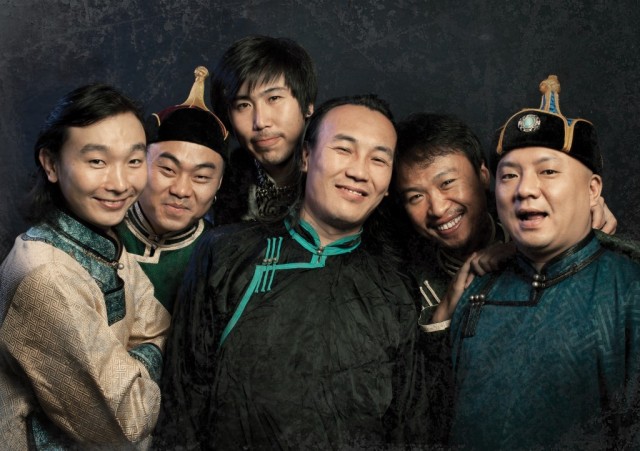
Hanggai
11/17 – 幸福里 (Happiness Lane), by Chuan Zi (川子). This is a song about the rise of commercial housing in China and the associated real estate bubble (and demolition economy) in China’s cities. The song focuses on the ways the rise of commercial housing has left the lower classes behind. From the lyrics: “I am very careful saving money, but I would need to save for 3 centuries before I could live in Happiness Lane,” and “40,000 Yuan per square meter! It has nothing to do with me.” https://www.youtube.com/watch?v=r7fY8SdHexE

Chuan Zi
11/15 – A Pure Person, by Lim Giong (林強). Lim is a musician, artist, DJ, songwriter, music producer, director, and actor living in Taiwan. A Pure Person was part of his soundtrack for Hou Hsiao-Hsien’s 2001 film Millennium Mambo. It also appeared in Jia Zhangke’s film 24 City. Lim’s music has been featured in most of Jia’s films, such as The World, A Touch of Sin, and Still Life.
11/10 – 回到中学的暑假 [A Summer’s Return to High School] by My Little Airport, a Hong Kong based indie-pop duo. They write quirky little songs in Cantonese and English.
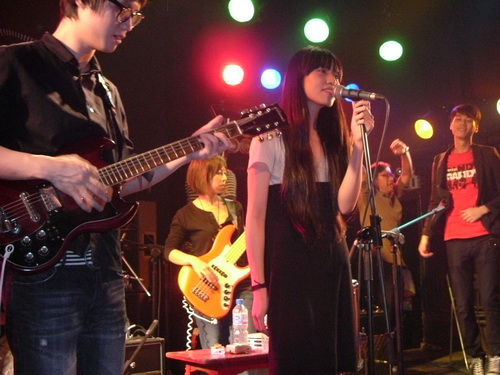
My Little Airport in concert
11/8 – 万年花 (Eternal Flowers) by the Dayan Ancient Music Association Naxi Music from Lijiang (Nimbus, 1997). The Dayan Ancient Music Association was founded by Xuan Ke in the town of Lijiang, Yunnan, and has been offering nightly performances of ‘ancient Naxi music’ for tourists there for since the 1980s. The group’s popularity has soared with the rise of tourism in Lijiang, now a UNESCO-designated World Heritage site. But in a 2003 article in the journal Yishu Pinglun, the musicologist Wu Xueyuan claimed that ‘ancient Naxi music’ was a ‘cultural fraud.’ Xuan Ke replied by suing Wu and Yishu Pinglun for libel and the Lijiang court – feeling the need to protect Lijiang’s ‘brand’ as the home of ‘ancient Naxi music,’ ruled in Xuan’s favor. The ‘guilty’ parties then organized a 2005 conference at the Chinese Academy of Art to discuss the legal and intellectual issues surrounding the case, which raises many questions about what constitutes ‘pure’ ancient music. For a fascinating account of Naxi music and the litigation surrounding Wu’s article, see this article in China Heritage Quarterly.
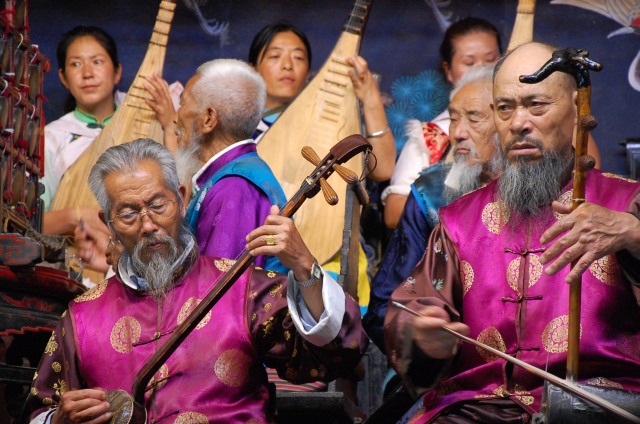
Dayan Ancient Music Society, Lijiang. Photo by Tim Oakes
11/3 – Stone Forest Nocturne, by MinXiao-Fen, from the Rough Guide to Chinese Music, Vol. 1. According to the Rough Guide: “From Nanjing, Min Xiao Fen is a virtuoso on the pipa and ruan, two types of plucked lutes, which she learnt from her father, a pipa master.. She was a pipa soloist with the Nanjing National Music Orchestra, won several competitions, and performed with the Shanghai National Music and Symphony Orchestras before relocating to the USA in 1992. She has since performed with many top American symphony orchestras, has worked with top Chinese and American contemporary composers, and improvised with avant garde and experimental musicians and guitarist Gary Lucas. Stone Forest Nocturne is a modern composition inspired by the Stone Forest, a spectacular rock formation in Yunnan province. Min Xiao-Fen performs this piece on the ruan, which has a more mellow tone and a lower range than the pipa.”
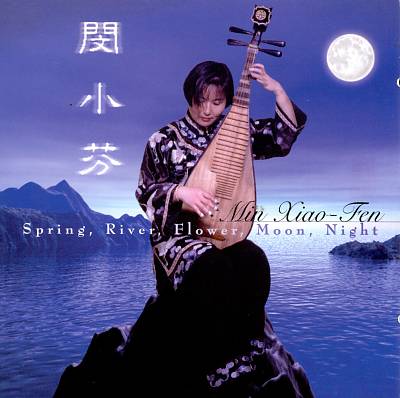
Min Xiao-Fen
11/1 – 志愿的人 (Volunteers), by Carsick Cars, from Carsick Cars (Maybe Mars Music, 2008). Carsick Cars sound a lot like Sonic Youth, and in fact have toured with them in Europe in 2007.
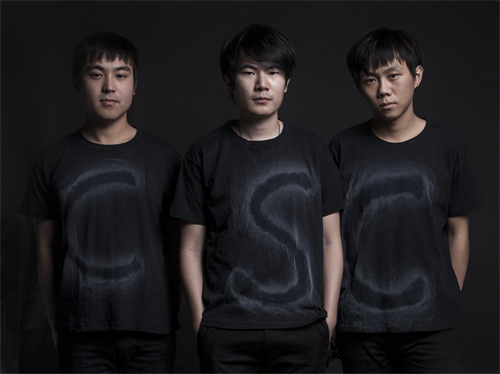
Carsick Cars
10/25 – 部分土豆进城 (A Piece of Potato Enters the City) by Hu Mage (胡吗个). According to Bao Ying, in the Encyclopedia of Contemporary Chinese Culture, Hu Mage graduated from Middle China Normal University in 1995 with a degree in…Geography! He then joined the ‘floating population’ and migrated to Beijing where he has recorded at least a couple of albums, the first of which was wonderfully titled Everyone Has a Wooden Bench, Mine Will Not Be Brought into the Twentieth-First Century (人人都有个小板凳,我的不带入二十一世纪). “Although Hu’s music can roughly be categorized as indie folk-rock, it is distinguished from any existing Chinese music with its DIY production, the irregular use of fingering and rhythm, the freely incorporated singing and narration in Hubei dialect, the good-humoured account of the daily ironies in a sojourner’s life, and the expressiveness of its extraordinarily repetitive refrains.”
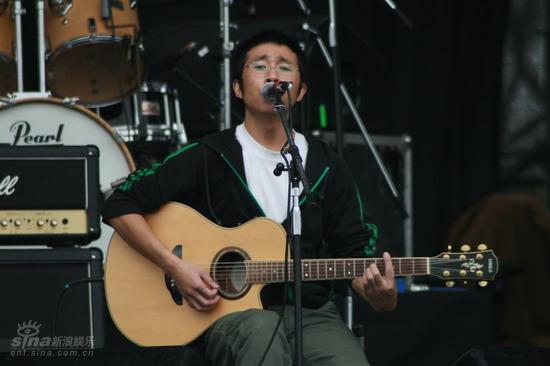
Hu Mage performing at the Modern Outdoor Music Festival, Beijing, 2007
10/20 – Koniqiwa Tokyo, by Hang on the Box. Teenage classmates Wang Yue and Yilana met like-minded Yang Fan, and, without practicing, announced they were Beijing’s first all-girl punk band. Shortly after, they embarked on their first performance and left the audience at Scream (China’s first underground club) unsure whether to laugh or jeer. The group recruited a drummer, rehearsed and were soon wowing the audiences with their audacious lyrics and fast-paced music.
10/18 – 东方红 (The East is Red), lyrics attributed to Li Youyuan. China’s de facto anthem during the Cultural Revolution. The melody was derived from a local Shaanxi folk song. Popular during the 1940s in the base area of Yan’an, the song was revived during the Cultural Revolution as part of the cult of Mao Zedong.
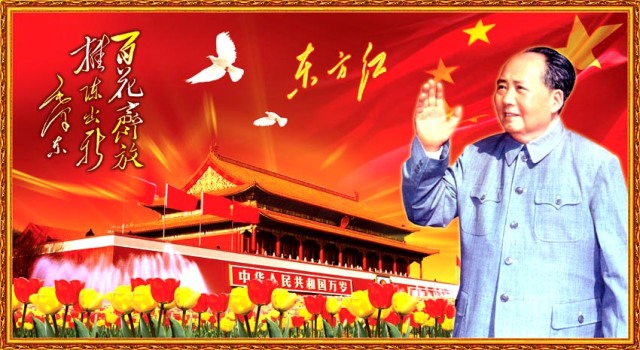
10/6 – 十面埋伏 Ambush from All Sides, played by Liu Dehai (刘德海), from a 1970 concert, presumably in Beijing. Liu Dehai (b. 1937) is one of China’s great pipa artists, and ‘Ambush from All Sides’ is his signature piece. His adaptation has made the composition world-famous and cemented its association with his name. ‘Ambush from All Sides’ first appeared in 1818 and is attributed to Hua Qiuping, but probably was played in various versions long before the score was actually written down or published. It commemorates the famous defeat of General Xiang Yu in 202 BCE by Liu Bang.
10/4 – 香格里拉 (Shangrila) by Shanren Band. Shanren is a group of Buyi, Wa, and Han musicians from Yunnan and Guizhou. They play, according to their profile on Baidu, indigenous music from the Yunnan-Guizhou Plateau fused with “Rock, Reggae, and Ska, while showcasing a variety of weird and wonderful instruments.”
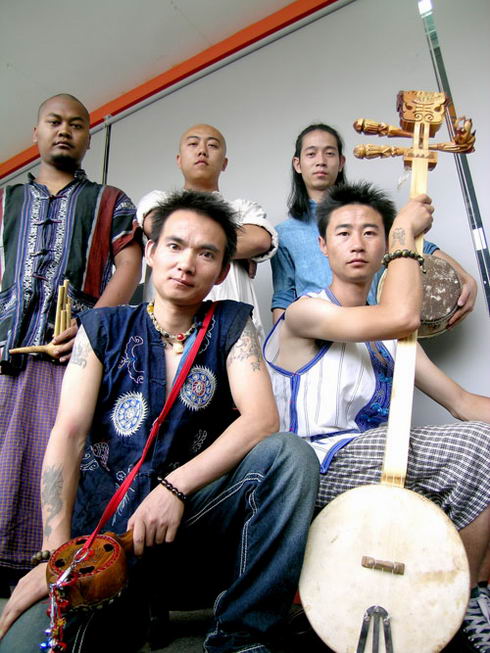
山人乐队 Shanren Band
9/29 – Panjir, by Panjir, from the “Rough Guide to Chinese Music, Vol. 2”. According to the Rough Guide, “Panjir predominantly play the music of the Uyghurs from Xinjiang, the largest administrative area of China, in the heart of Central Asia. The Uyghurs are a Turkic people whose music includes influences from Persia, India and the Far East. With its rich mix of percussion (qang-dulcimer and dap), strings (tambur, dutar, satar, saz) and wind instruments (ney), the music lends itself well to the improvisation that Panjir experiment with.”

Urna
9/27 – Yanzagan Zootoi Saaral Mori by Urna Chahar Tugchi (Урна Цахар Тугч / 乌仁娜), from Tal Nutag, 1995. Urna is a singer from the Mongolian region of Ordos. She trained at the Shanghai Conservatory of Music. She currently divides her time between Germany and Egypt. More about her here.
9/22 – 好花红 (Good Red Flower) by Second Hand Rose 二手玫瑰, a Beijing-based band, from their eponymous first album (2004). Second Hand Rose is well known for their music inspired by traditional Chinese instruments and folk melodies.
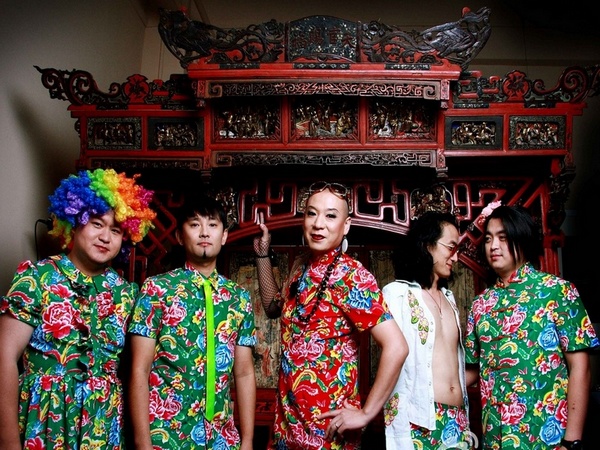
Second Hand Rose
9/20 – 姑蘇春曉 (Spring Morning in Suzhou) from 夜 深沉: 中國拉弦樂曲精選第一集 (Night Thoughts: Chinese Bow-Strings Music, Vol. 1) Hugo, 1989. This is a classic erhu piece, composed in the late 19th century by Jian Dong (建棟). The erhu is a two-string bowed instrument. Here’s a Danwei.com video about the erhu:
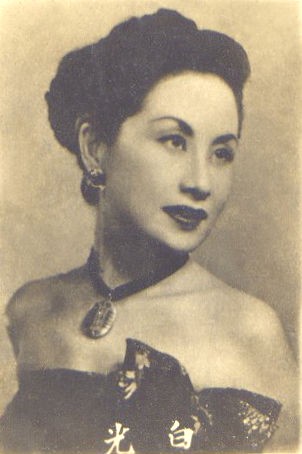
Bai Guang in 1949
9/15 – 秋夜 (Autumn Night) by Bai Guang (白光), from the “Rough Guide to Chinese Music, Vol. 2”. According to the Rough Guide, Bai Guang was born in Beijing in 1921 and “was one of China’s ‘Seven Great Singing Stars’ who doubled up as the most famous film stars of the day in Shanghai. Known as ‘White Light’, she had a slightly deeper voice than her contemporaries and brought a seductive tone to her records. ‘Qiu Ye (Autumn Night)’ was one of her biggest hits.” Bai moved to Hong Kong following the revolution in 1949, and eventually settled in Malaysia where she died in 1999.
9/13 – 大雾版《北京北京》- Beijing Beijing, Big Smog Version. This is an altered version of Wang Feng’s well-known song ‘Beijing Beijing’ that emerged in 2013 in response to Beijing’s ‘airpocalypse’ pollution. Given the angst and alienation that is the subject of Wang’s original, an airpocalypse version of ‘Beijing Beijing’ is appropriate, it seems. It was something of an internet sensation at the time. Here’s a translation of the second stanza of the lyrics:
The visibility is only 200 meters / Just like the distance between the property developer and the regulatory bodies / People ask each other and think how to solve the problem of environmental pollution / Who is emphasizing development, only caring about the short-term profits? / Who is mining crazily, and not caring about the problems left behind? / Who is boasting happiness, but neglecting governance?
9/8 – Shaanxi Air (陕北风) by Silk Road Music, from Endless (1998). Silk Road Music is a Chinese-Western ensemble founded in Vancouver, BC by Qiu Xia He.
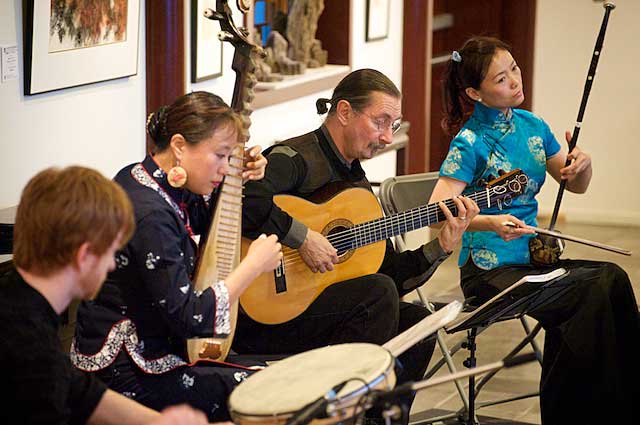

Nan Ni Wan 1940
9/6 – 南泥湾 (Nan Ni Wan) by Cui Jian (崔建) from Solution 解决 (Beijing Jingwen, 2005). Nan Ni Wan is a song from the Chinese revolution, written in 1943 by the poet and playwright He Jingzhi (贺敬之). Nan Ni Wan is an actual place in Shaanxi Province (on the Loess Plateau) which, in the early 1940s became a success story in the Communist Party’s promotion of self-sufficient agricultural production. He’s lyrics were set to a traditional folk melody from the region, and the song become popular as a revolutionary tune. In the 1990s, China’s ‘godfather of rock,’ Cui Jian, revived the song and made it a staple of his concerts. Many have suggested that Cui’s performance of the song was an ironic critique of the Party, since the song’s idyllic lyrics didn’t really match the reality of Nan Ni Wan in the late 1980s and early 1990s (the years when Cui performed the song); it remains a relatively poor region where life hasn’t improved that much since the time when the song was originally written. Here’s a translation of the song’s lyrics:
Flowers in a basket are fragrant
Listen to me sing a little
Sing for a little
Come to Nanniwan
Nanniwan is a nice place
Nice place
Nanniwan in years gone by
Was a barren mountain with no human beings
Nanniwan today
Is different from the past
Nanniwan today
Is different from the past
And no longer looks like it did
It’s the best Jiangnan in north Shaanxi
Nice place and beautiful scenery
Nice place and beautiful scenery
Crops everywhere
Cattle and sheep all around
9/1 – 黄河愤(The Yellow River In Wrath); Movement #3 from the Yellow River Piano Concerto (黄河协奏曲). The Yellow River Piano Concerto was a collaborative effort on the part of several musicians. It premiered in 1969. Although Western music critics ridiculed the piece for its bombastic and formulaic style, it has been an important composition for Chinese nationalism. It was played (and recorded) by the Philadelphia Orchestra, with Eugene Ormandy conducting, as part of their pioneering 1973 tour of China. The New York Times recalled that in the 1970s, the concerto gained a certain infamous notoriety in the West: the concerto was “one of those awful ideologically-approved pieces of Socialist-realism propaganda, but it was so bad it actually had kitsch value, and it did have a glittering and rather difficult piano part.” The concerto is very much associated with China’s Cultural Revolution, and was even banished from China’s concert stages after 1976 as part of China’s efforts to chart a new cultural course following Mao’s death. Nationalism, however, meant that it could not be kept away for very long, and by the 1980s, new recordings began appearing.
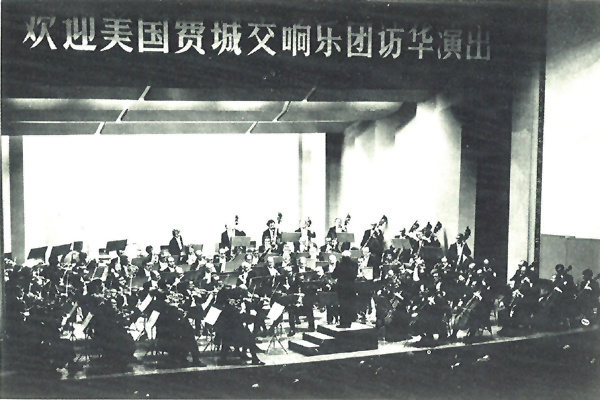
Philadelphia Orchestra, conducted by Eugene Ormandy, in Beijing, 1973
8/30 – 给你一点颜色 (Give you some color), by 谭维维 Tan Weiwei, performed on China Star with a Huayin Lao Qiang 华阴老腔 troupe from Shaanxi, December, 2015. This performance practically broke the internet in China! Huayin Lao Qiang is a regional folk-opera form from the Wei River Valley area around the sacred peak of Hua Shan. With its rhythmic, exuberant and unrestrained style, Huayin Lao Qiang has been dubbed the rock and roll of ancient China, and is said to have “descended from the chanties of boatmen working the Yellow River and Wei Canal 2,000 years ago, transporting grain from the Imperial Granary to the Western Han capital of Chang’an.”
8/25 – Night Life in Shanghai, (Shanghai Restoration Project Remix) by Zhou Xuan and the Shanghai Restoration Project, from Remixed & Restored, Vol. 1 (2007). Zhou Xuan, the “Golden Voice,” was an iconic 1940s film star in Shanghai. This version is remixed and embellished by The Shanghai Restoration Project, who characterizes his music as “Traditional Chinese instruments meet hip-hop and electronica.” See more about TSRP here http://shanghairestorationproject.com.
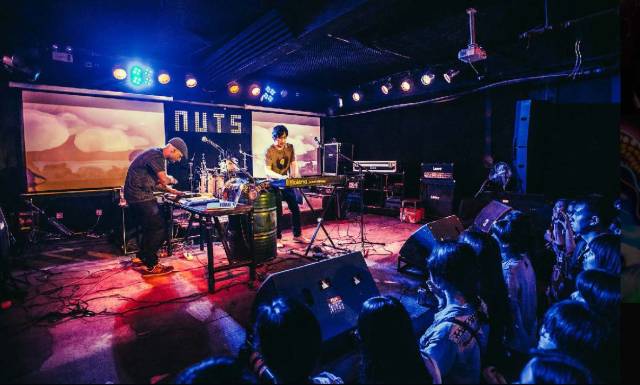
The Shanghai Restoration Project performing in Chongqing in 2014
8/23 – 女神 (Goddess), by Li Zhi, a folk rocker from Nanjing. The ‘Goddess’ of this song refers to the Goddess of Democracy stature erected by students in Tiananmen Square, during the 1989 protests.
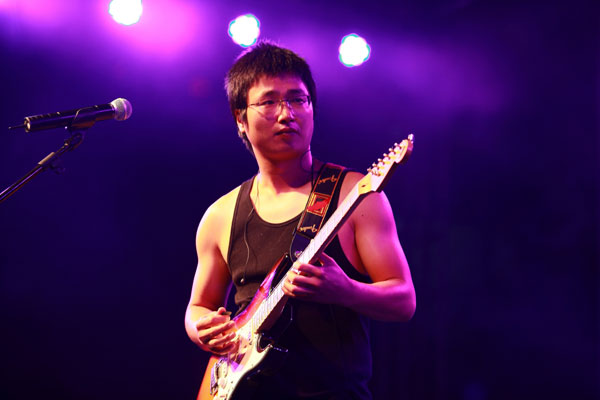
Li Zhi (China Daily photo)

